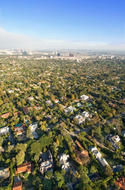It’s an idea echoed everywhere from “Friends” to “Girls”: Young people want to live in cities. And, we’re told, a lot of them (at least the cool ones) do.
It’s a common assumption. But it’s also wrong.
Between 2010 and 2013, the number of 20- to 29-year-olds in America grew by 4 percent. But the number living in the nation’s core cities grew 3.2 percent. In other words, the share of 20-somethings living in urban areas actually declined slightly.
This trend has occurred in supposedly hot cities like San Fransisco, Boston, New York and D.C., notes demographer Wendell Cox. Chicago and Portland, Ore., both widely hailed as youth boom-towns, saw their numbers of 20-somethings decline, too. read more »



















